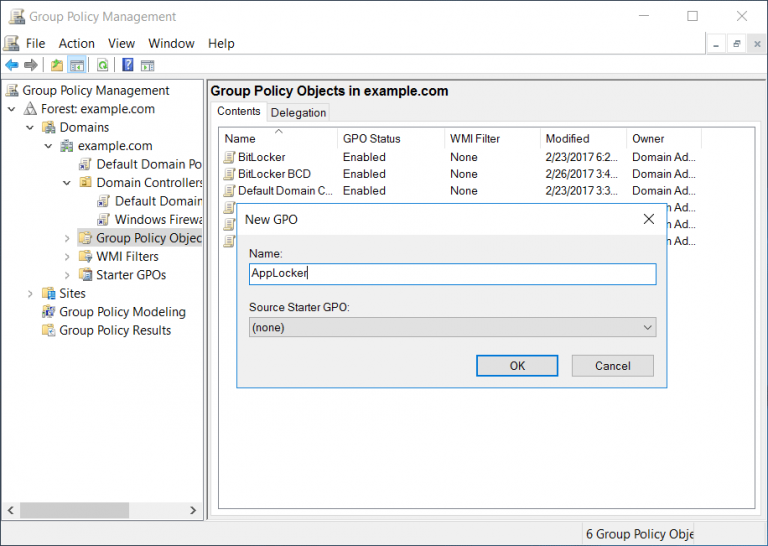
- APPLOCKER POLICY TEMPLATE UPDATE
- APPLOCKER POLICY TEMPLATE WINDOWS 10
- APPLOCKER POLICY TEMPLATE PASSWORD
- APPLOCKER POLICY TEMPLATE WINDOWS
When the profile is applied, the next time the device restarts it begins the provisioning process of becoming a kiosk. Setting these policies defines either a single-app or multi-app kiosk.
APPLOCKER POLICY TEMPLATE WINDOWS
PolicyĪllows users to delete provisioning package (PPKG) files while using them.Īllows users to delete MDM profiles while using them.Ĭonfigures policies related to Windows kiosks.

APPLOCKER POLICY TEMPLATE UPDATE
ValuesĪllows apps installed from the Microsoft Store to update automatically. ValuesĪll Trusted Apps (Non-Microsoft Store Apps)Īllows apps from any source to be installed. Valuesįorces all app data to be stored on the Windows storage volume.
APPLOCKER POLICY TEMPLATE WINDOWS 10
This policy can only be enforced on Windows 10 Pro, Business, Enterprise, and Education editions. ValuesĪllows the device user to capture video and audio with Xbox Game Bar. To delete an application, click next to the added application.Īn application that was added on the App Install/Run Allowlist cannot be added.Īllows the device user to enable developer mode.To add an application, click Add, and then select applications in the Select Application window.Any applications not on the allowlist are deleted, even if previously installed. Set the Windows app policies based on the blocklist or the allowlist.Īdd applications to allow their installation.
APPLOCKER POLICY TEMPLATE PASSWORD
Set the number of times that you can reuse the password that you previously used, including the current password.Īllows using the Windows App Store and configuring options for application controls, such as installation and blocklist/allowlist. Set the number to 0 for an indefinite period. The camera is disabled in screen lock mode. Set to apply the password policy when the screen is locked. ValuesĪllows the device user to turn on Open Extended Dictionary, Internet search integration, or cloud candidate features to provide input suggestions for Windows IME that don't exist in the local dictionary. ValuesĪllows the device user to turn on history for Windows IME (input method editor), which builds a dataset for predictive character input. Default: Allow.Īllows the device user to access Cortana features. ValuesĪllows using device search via Bluetooth.Īllows the use of NFC (Near Field Communication).Īllows or blocks the usage of removable storage devices. PolicyĮnables broadcasting the device's presence over Bluetooth. ValuesĬontrols the network settings, such as Bluetooth, Wi-Fi tethering, and NFC.


ValuesĪllows the device user to use Windows Tips. ValuesĪllows the device user to sync their Windows settings across devices. ValuesĪllows the device user to change the account settings, including adding and removing other users. ValuesĪllows the device user to change the Workplace settings, also known as the Access work or school settings, and change EMM account credentials on the device. ValuesĪllows the device user to change the Region settings. ValuesĪllows the device user to change the Power & sleep settings. ValuesĪllows the device user to change the Language settings. Disallow - The device user can't modify the Sign-in options.Īllows the device user to change the Date & time settings.Allow (default) - The device user can modify the Sign-in options.These options include the available authentication methods, dynamic lock, and whether to display account details on the sign-in screen. PolicyĮditions: Windows Pro, Enterprise, EducationĪllows using the screen capture function.Īllows modifications to the VPN settings.Īllows the device user to modify the Sign-in options in the device's account settings. SystemĪllows the use of features such as factory reset, camera, screen capture and VPN. The availability of each policy varies depending on the OS version. This section describes the policies you can


 0 kommentar(er)
0 kommentar(er)
